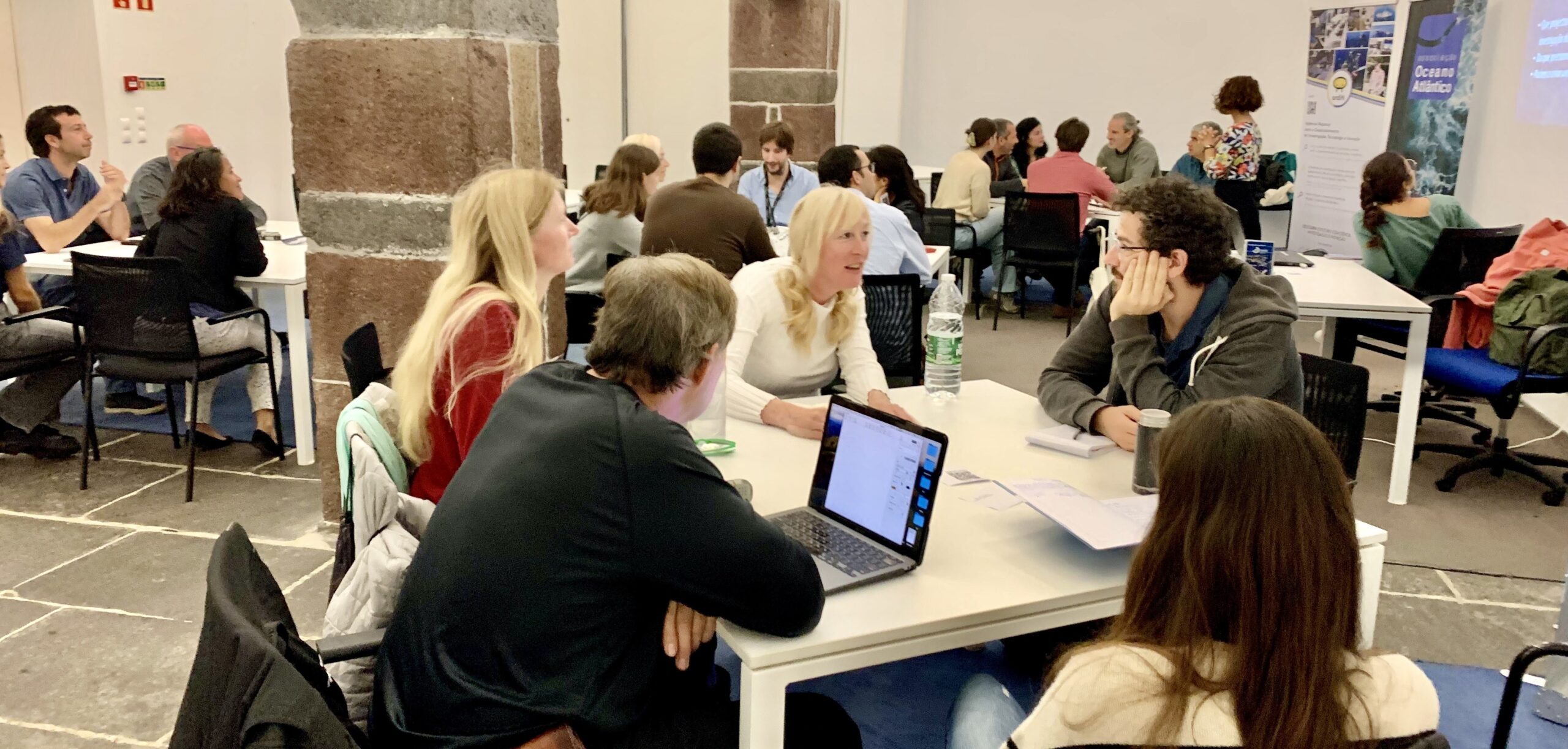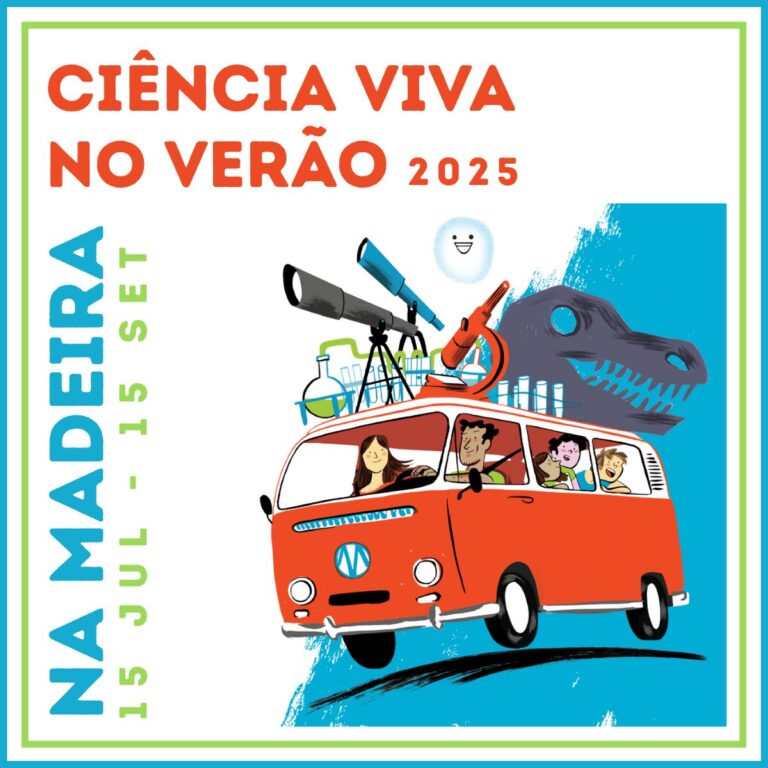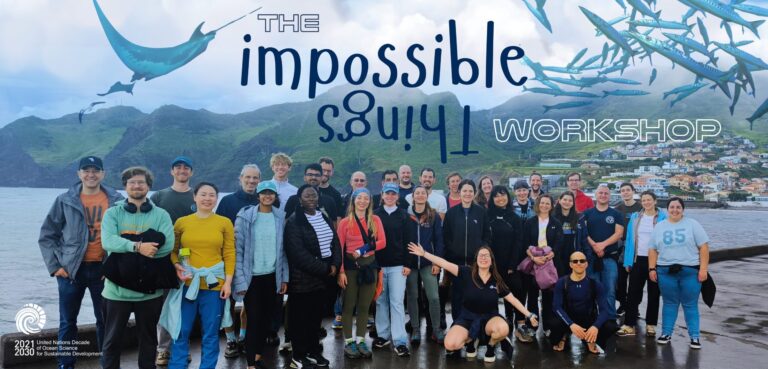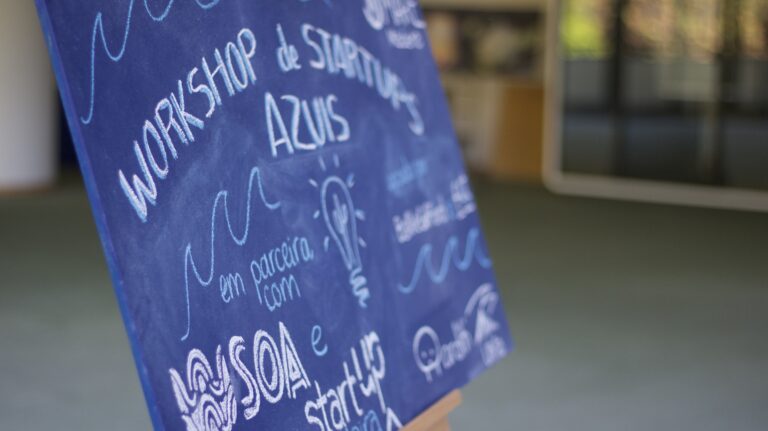Tuning in to Madeira’s community

MAD-Deep, the Madeira Deep-Sea Symposium, took place on 18-19 December 2023 in partnership with SEDES-Madeira and with the support of Associação Oceano Atlântico and the FCT. We designed this event to gather scientists and ocean leaders from across Portugal and beyond to discuss the importance and scope for accelerating deep-sea research in Madeira.
MAD-Deep was motivated in part by the upcoming deep-sea research expedition, JellyWeb Madeira (coordinated by the GEOMAR Ocean Research Centre in Kiel, Germany) that’s taking place in Madeira’s waters this February. The Chief Scientist of this expedition, Dr. Jan Dierking, was keen to learn more about the various deep-sea efforts done to date in Madeira and agreed to be a guest speaker at the symposium.
But it was also an important opportunity to share our work and our vision for the future of deep-sea research with the wider community in Madeira. To that end, we sought a balance between scientifically-relevant presentations (and roundtable discussions) with those that would engage and resonate with a more general audience. We did this because we know that for deep-sea and other aquatic research to be fully embraced by Madeira, it must be tailored to the needs of its wider community. And how can we know what the community’s needs or wants are if we don’t ask?
Presentations by our guest speakers and our scientists at MARE-Madeira are summarized in the podcasts that now populate our Spotify profile. We hope these are of value to you, enabling you to review highlights from our event’s scientists and NGO representatives in their areas of expertise. This article, on the other hand, tries to summarize the uncertainties, concerns and wishes expressed by the community. These were shared in the form of questions to individual speakers and comments within the roundtable discussions. We intend this summary to act as a launchpad for further action. Not all action can be led by us, but we recognize our responsibility, as organizers of MAD-Deep and as Madeira’s largest non-profit marine research institute, to amplify these concerns and wishes through the means we have available. Please consider this article a first, small step and a promise of our intention to do more.
Reviewing all the comments and questions, we believe they fit broadly within four main categories:
1. Concerns related to human impacts on Madeira’s native species and ocean health
2. Concerns on water quality and pollution in relation to public health
3. A request for improved communication of ocean-related data and science with the general public
4. An acknowledgment of the interplay between a healthy ocean and a healthy economy in Madeira

1. Concerns about human impacts on Madeira’s ocean health
The first concern we were able to answer with a relatively high degree of confidence. Furthering understanding the biology of Madeira’s aquatic life and the ecological functioning of Madeira’s aquatic systems is, after all, MARE-Madeira’s raison d’etre. João Canning-Clode, our institute’s founder and director, was asked about the impact of tourism and aquaculture on Madeira’s waters, particularly related to the introduction of non-native species. Non-native species is a research topic João’s long been passionate about and he explained that we’ve been monitoring marinas around Madeira for the last 10 years, looking for any new species that arise. We inform the government of any new arrivals, as early detection is critical to an effective non-native species management plan.
The second concern is more difficult, if not impossible, for us to answer as our institute isn’t dedicated to public health. The main concern raised was that, through the island’s rapid development, the water treatment and sewage systems appear insufficient to handle the quantity of waste. Between excessive sewage and run-off, people are concerned about the water quality around Madeira – partially in response to the risk of algal blooms, but more so regarding the risk to human health.
As João Monteiro, Associate Researcher at MARE-Madeira and the University of Madeira explained, what we know of pollutants or excessive nutrients around Madeira is through an ecologist’s lens: our studies look into pollutants or nutrient levels as they relate to specific ecological questions. As such, we have some data on nutrient levels, but not to any sort of public-health relevant degree: we don’t do monitoring of public beaches nor long-term monitoring of nitrates, phosphates or other abiotic factors around the island.
Instead, this question is better answered by the government, and particularly the Directorate for the Environment. Mafalda Freitas, representing the Directorate for the Sea, explained that regular monitoring of waste water is required under an EU directive and that the company responsible for managing Madeira’s municipal water and waste is Águas e Resíduos da Madeira. Concerning ocean health, the Directorate of the Sea follows the EU’s Marine Strategy Framework Directive, which requires eleven descriptors be regularly assessed to ensure good environmental status of Madeira’s ocean. Her team started working on this three years ago; they’re gathering the data from all the public entities that work with the sea and uploading it onto a new website, Portal do Mar da Madeira. They hope to have all the data available on this site soon, but in the meantime she invited anyone with questions to reach out to her team directly.

Sargassum algae in the Madeira archipelago. Photo credits: João Canning-Clode, Sonia KM Gueroun, Francesca Gizzi
Regarding the risk of algal blooms, this is much more our field(!) and we can share that the risk of such blooms here is low due to the oligotrophic nature of Madeira’s deep, open-ocean waters (i.e. their low primary productivity due to the relative absence/lower abundance of photosynthesizing plants and other organisms – like kelp, seagrass or algae – that can be found in greater abundance in shallower waters). Blooms can sometimes occur, but due to the strong ocean currents surrounding Madeira, nutrients from the island are swept out to sea before they have the chance to feed regular, seasonal algal blooms.
That said, there are two types of algae that we’re seeing now – one is a bloom of floating algae (Sargassum), which has drifted from the Sargasso Sea (i.e. it didn’t spring up from an overabundance of nutrients in Madeira). The other algae we’re seeing is Rugulpteryx, which is a brown macroalgae, a benthic algae, and one that is native to the Pacific. It’s a highly invasive species within Europe and its introduction is worrying for Madeira, as mitigation efforts in other places (like the Canaries) have been unsuccessful in deterring the invasion of this species so far. You can read more about this algae in our PhD student Alejandro Bernal’s paper from 2022. This growth is different from an algal bloom, however; it’s a known non-indigenous species (NIS) that establishes quickly and outcompetes native species.
3. Improve communication of ocean data and science with the public
There was also a repeated request for improved communication of ocean-related data and scientific results with the community. This was expressed in both the questions posed to speakers and in the roundtable discussions. There was clear frustration at the difficulty in finding data relevant to the concerns mentioned above (specifically related to water quality); there were also more general questions about how we share our data with the government to inform policy.
On this, we agree that we can become more systematic and transparent in data sharing. To date, we share our data on EU and other public repositories including EU Marine Observation and Data Network (EMODNet), the EU Open Science Cloud Portal (ESOC), the Ocean Biodiversity Information System (OBIS), the Global Biodiversity Information Facility (GBIF), the PANGAEA Data Publisher for Earth and Environmental Science and the Smithsonian Institution’s global MarineGEO network data repository. We’ve also created a global, digital platform to collate and share data on marine debris and non-indigenous species, DeNIS (https://www.denis-db.com — it’s still being added to/amended, but you can see a first effort!).
We also feel that João Canning-Clode’s role within SEDES-Madeira and the expansion of SEDES in Madeira is an important step towards more transparent information sharing. SEDES is a civil association that seeks to influence public policy and aid information dissemination in Portugal, and João is the head of the recently-created Observatory of the Sea in Madeira. Through this position, João hopes to encourage Madeira to shift towards more open, transparent data sharing, particularly related to the ocean and ocean-based activities. To this end, he’s already written a chapter in the soon-to-be-released second edition book by SEDES regarding its vision for Portugal (the first edition can be found here). João’s chapter also reflects the importance of transparency and digital data sharing to enable a more informed and empowered community, in turn aiding more democratic public policy.
We also communicate with the government of Madeira directly, sharing relevant findings on non-native species, conservation, human pressure impacts and other areas relevant to public policy. We have also written policy briefs for public hearings when we feel the decisions in question will impact the health of the ocean; most recently, we wrote a policy brief combining professional opinions within MARE-Madeira and across Madeira’s scientific community to raise the ecological threat posed by a company wanting to install artificial reefs around the island. (We discuss the dangers of this in another blog article)
Beyond this, we were also urged by the members of the community to communicate our research and findings in a more accessible way. To this end, greater social media and visual, engaging methods of conveying information were encouraged, as well as in-person events and educational efforts.
The point is a good one and we promise we’re trying hard to improve. This year we created a short video (The Oceanic Oasis) designed to convey some of our research in an engaging way, we started our MARE-Madeira blog a year ago, we’ve started having in-person stalls at local events (including MIUT and the Christmas Market), we’ve ramped up our social media efforts (particularly thanks to our new intern!) and we started a youth engagement initiative, the MARE-Madeira Youth Ambassadors program. We’re really proud of this Youth Ambassadors program and the work these young people have done to aid ocean literacy in Madeira. They organized a beach-clean (where one of our PhD students, Sara Bettencourt, explained the main sources of marine litter to the young people gathered) and they did an audio tour for an exhibition on marine litter at the Funchal Natural History Museum (the exhibition itself being designed and coordinated by our researchers, Dr. Ana Dinis and Dr. Alejandro Escánez, and their partners on the EU-funded Project MIMA). Based on the room’s feedback, however, it’s clear that this isn’t enough and one of our largest constraints in going further is funding.
Our scientists are funded primarily by EU project funding and so their roles are stipulated within the requirements of those projects. Most projects have some funding to support outreach and communication, but none enable us to hire a full-time communications officer. Last year, thanks to the Associação Oceano Atlântico, we were able to hire me(!) but my role is split between fundraising, international partnerships, events, admin, management and communications – and that communication includes international-focused communications as well as local communications. Only in the last couple of months, thanks to some extra funding from Baillie Gifford(!), have we been able to hire an intern (who is far better suited to local communications, being Portuguese herself) and we’re working together to create more social media content, podcasts and other methods to engage the local community.
But the problem comes back to funding. If there was funding available to properly support a communications team, we’d be able to do everything! For now, we’re splitting hairs just to fund our researchers. And on that note, I’d like to give some recognition to the educational and outreach work they already manage to do, in-between their demanding research roles: with a team of only 36 researchers, we’ve done 70(!) educational events this year. These events are mostly targeted at school children and families, with school visits around Madeira and field work (for example with the Ciência Viva summer program), so those without school-age children may be less aware of these efforts, but they are happening!
All this to say, we hear you and we want to communicate in a way that resonates with the local community. Not least because we are doing pretty amazing science here at MARE-Madeira and we want you to be as excited about that as we are. We will keep trying to improve. If you think we do something particularly well (or badly!) in the coming months and years as we continue to work on our communications, please let us know. It will help us immensely to get this sort of feedback.
4. The interplay between a healthy ocean & a healthy economy in Madeira
Finally, there was an acknowledgment of the interplay between a healthy ocean and a healthy economy in Madeira. It was noted that ambitions of a more sustainable and protected ocean are not necessarily at odds with new ocean-related businesses and start-ups. For example, many start-ups are creating technologies that seek to improve the efficiency and sustainability of traditional ocean-based industries, like fishing or maritime trade. More and more, traditional businesses also see the need to improve their sustainability. We had an example from a cruise company representative, who said that her customers want to see that they are improving ocean health and engaging with science. So our interests are aligned there as well and we’re optimistic about the potential for partnerships.
The point was also made by a table of local attendees that a healthy ocean is critical to Madeira because it supports the majority of jobs here – namely, tourism and fishing. Which means it’s in everyone’s interests to engage with regional and national policy that affects the ocean, because those decisions can have a real effect on the long-term viability of businesses, and people’s livelihoods, in Madeira.

To those community members present, I hope you feel this is a fair summary of your contributions. And I’d like to thank everyone who came out to MAD-Deep once again – we learned a great deal from your perspectives and will do our best to meet your expectations. We also agree that a healthy ocean is vital to Madeira and will do our part to share what we learn so that more citizens and residents feel informed and empowered to make decisions, vote, or even start new, ocean-related businesses!
Working more closely together is the best chance we have for protecting and sustainably interacting with Madeira’s (and our planet’s) greatest natural resource. To this end, please do keep tabs on our social media, as we are already planning the next community-focused event… more on this soon!



